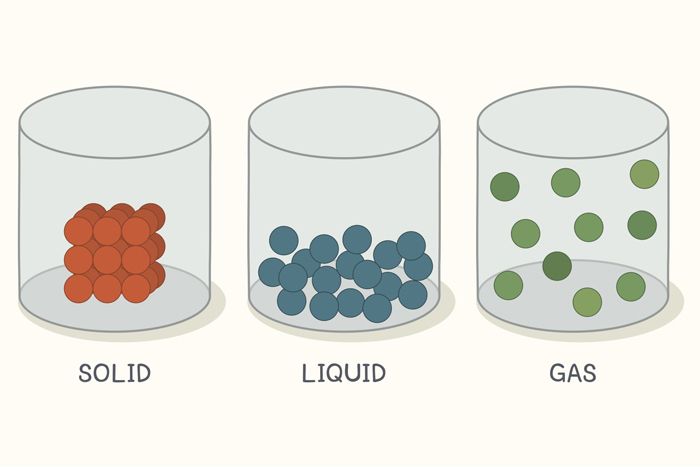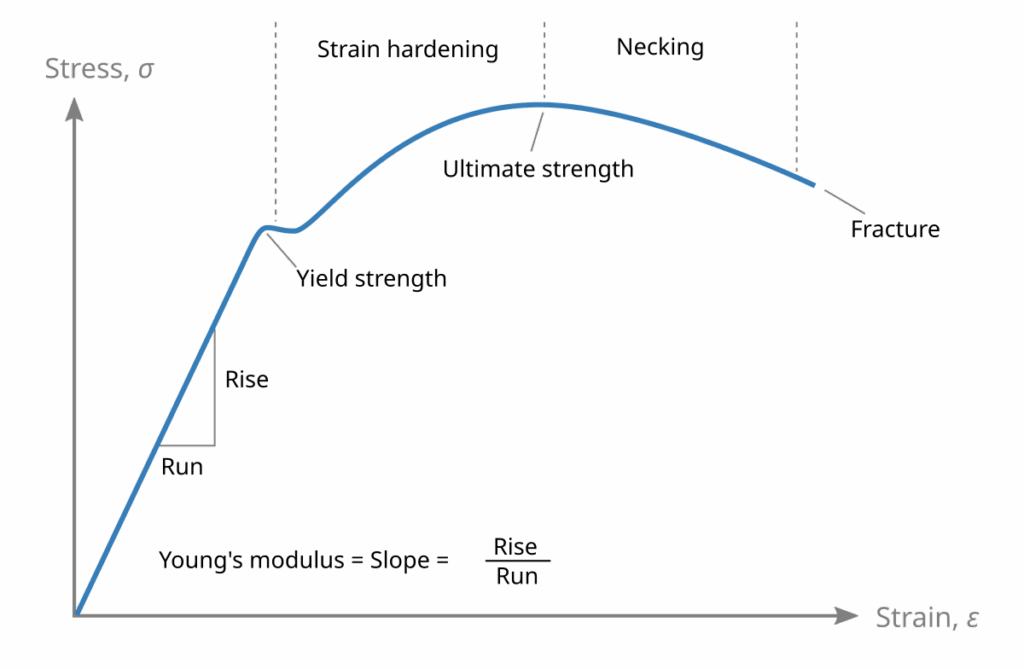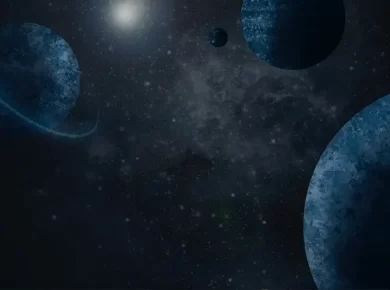Properties of Solids
Solids have a fixed shape and volume due to strong intermolecular forces. Key properties include elasticity, plasticity, hardness, strength, ductility, and malleability, which define how solids behave under force, pressure, or temperature.
| Elasticity | Material regains shape & size on removal of force |
| Plasticity | Material remains deformed permanently on removal of force |
| Stress | (Restoring force / area) > F / A (Pascal) |
| Longitudinal strain | Change in length / Total length (in case of tensile & compressive stress) |
Hooks law
- Stress imposed on a solid is directly proportional to the strain produced, within the elastic limit.
- Stress = k * strain (Where k is modulus of elasticity )
Stress Strain Curve
The relationship between the stress and strain that a particular material displays is known as that particular material’s stress–strain curve.
- It is unique for each material and is found by recording the amount of deformation (strain) at distinct intervals of tensile or compressive loading (stress).
- These curves reveal many of the properties of a material (including data to establish the Modulus of Elasticity, E)
Stress–strain curves of various materials vary widely, and different tensile tests conducted on the same material yield different results, depending upon the temperature of the specimen and the speed of the loading.
It is possible, however, to distinguish some common characteristics among the stress–strain curves of various groups of materials and, on this basis, to divide materials into two broad categories; namely, the ductile materials and the brittle materials
- Till yield point hooks law is valid & body remains elastic
- Within yield region (red region), stress & strain are not proportional but body still remains elastic (Known as yield point, Elastic limit & yield strength of the material
- From yield point to ultimate tensile strength strain increases rapidly even with a small change in stress. Body does not regains its shape & size fully & gets deformed permanently
- If Ultimate tensile strength & fracture point are closed > Material is brittle & if far away, then the material is ductile
Some Basic terms used in properties of solids
| Young’s Modulus (Elastic modulus) | A mechanical property of linear elastic solid materialsTensile or Compressive stress / longitudinal strain |
| Shear modulus (Modulus of rigidity) | Shearing stress / shearing strain |
| Bulk Modulus | Used to characterize compressibility of fluids- P/(change in vol. /volume) |
| Compressibility | 1 / bulk modulus |
✅ Importance of Understanding Properties of Solids
-
Helps select materials for construction and engineering.
-
Essential in designing bridges, buildings, and vehicles.
-
Explains how solids deform under stress and strain.
-
Used in metallurgy and manufacturing industries.
-
Important for quality control and material testing.
-
Supports innovations in material science and nanotechnology.
-
Used to predict the lifespan of materials under load.
-
Key in developing flexible, strong, or lightweight materials.
-
Explains hardness, brittleness, and toughness of objects.
-
Fundamental in understanding seismic-resistant designs.
For more updates, explore the Physics. Feel free to share your thoughts and comments.
If you’re passionate about building a successful blogging website, check out this helpful guide at Coding Tag – How to Start a Successful Blog. It offers practical steps and expert tips to kickstart your blogging journey!












